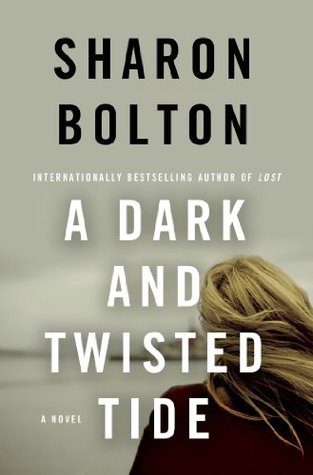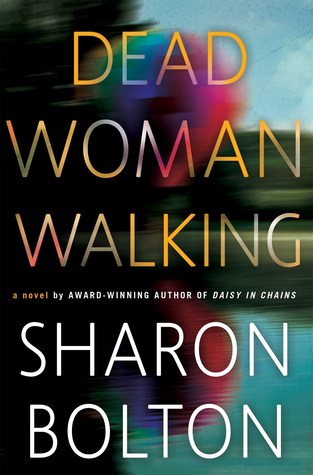Q & A | Sharon Bolton
Sharon J Bolton was born and brought up in Lancashire, the eldest of three daughters. As a child, she dreamed of becoming an actress and a dancer, studying ballet, tap and jazz from a young age and reading drama at Loughborough University.
She spent her early career in marketing and PR before returning to full-time education to study for a Masters in Business Administration (MBA) at Warwick University, where she met her husband, Andrew. They moved to London and Sharon held a number of PR posts in the City. She left the City to work freelance, to start a family and to write.
She and Andrew now live in a village in the Chiltern Hills, not far from Oxford, with their son and the latest addition to the family: Lupe, the lop-eared lurcher. Her daily life revolves around the school run, walking the dog and those ever-looming publishing deadlines.
Q & A
I am putting together these questions for you the day after I finished reading The Craftsman. When I finished the book, I knew I had to learn more about the brilliant mind behind such an awesome, awesome story. Thank you so much for taking the time to answer a few questions for my blog Murder and Moore.
MM : For those who have not read The Craftsman, can give a little synopsis of the story?
SB : It is 1969, and the small, moor-top town of Sadben in Lancashire is being terrorised by a brutal killer. Teenagers arevanishing and, like something from our worst nightmares, being buried alive. WPC Florence Lovelady is the first female police officer in Lancashire, and in spite of her intelligence and obvious ability, she is constantly fighting prejudice and sexism. Against all odds, she catches the killer, and her career goes into the stratosphere.
Thirty years later, when she’s the most senior serving female police officer in Britain, she goes back to Sabden to attend the killer’s funeral, but almost immediately events from the past start to repeat themselves. Did she get it wrong all those years ago? Or is something much darker at play?
MM : Who are some of your favorite authors?
SB : Joanne Harris, Kate Atkinson, Stephen King, Gillian Flynn, Charles Dickens, Belinda Bauer and Charlotte Bronte. Anyone who combines a powerful imagination with a gift for writing great prose.
MM : In The Craftsman, the subject of witchcraft comes up often. Some time ago I visited Salem MA. I did not know much about the Salem witch trials but after the trip I was immediately interested and disturbed by what I discovered. In the foreword of The Craftsman, you touched on why you decided to add the witchcraft element to the book. Can you expand on this?
SB : I was born and brought up in Lancashire, where stories of the Lancashire witches form a very real part of both the area’s folklore and its culture, and I always knew I would one day make my own contribution to their story. What intrigues me most about the phenomenon of witchcraft through the ages is why some women (occasionally men too) are marked out by society as ‘witches’. Are they doing something wrong? Or are they just different? Do we feel compelled, as societies, to seek out and punish ‘the other’? A serial killer novel set in Lancashire was the perfect opportunity to explore some of these themes.
MM : In addition to The Craftsman, Dead Woman Walking, and several other standalones, you are also the author of the Lacey Flint series. How is writing a series different than a standalone? Is your writing process different?
SB : Writing a series is easier in the sense that most of the characters are already formed, but harder in that with every successive book, their back story becomes more complicated. The author of a series has a difficult balancing act between how much to reveal for new readers, and how much to hold back. Lee Child’s character, Jack Reacher, is the perfect series protagonist because his back story can be summarised in a paragraph and the supporting characters are new with each book. Authors setting out to write a long running series would do well to follow this model.
MM : In The Craftsman, there is long flashback to the 1960’s when Florence was a WPC. When we meet Florence again, she is now an Assistant Commissioner. Can you tell us what happened to Florence during those 30 years? What was behind your decision to reveal very little of what happened to Florence for 30 years?
SB : Readers of the book will already know that in those thirty years, Florence had a very successful career, that she met her husband, Nick, and that the two of them had a son, Ben, who is fifteen years old. And that is all they need to know. The story of The Craftsman is about events of the past impacting upon the present and so the key points in Florence’s timeline are the months she spends in Sabden in 1969, and then the day or so when she returns thirty years later. Events in between might have formed her character, but they are of no real relevance to the story and, with word count in mind, had to be kept to a minimum.
MM : Is there a person in “real life” who was your inspiration to create Florence Lovelady?
SB : No. She is entirely fictional.
MM : If you were casting the movie version of The Craftsman whichactress would star as Florence Lovelady?
SB : The Irish actress Jessie Buckley is exactly how I picture Florence, but to be honest, casting decisions should never be left to the author. Creating a movie is an entirely different process to writing a book, and different talents need to come into play.
MM : What are you currently reading?
SB : A collection of spy novels, including one by my good friend, Mick Herron, and one by Luke Jennings, who was behind the hugely successful Killing Eve stories. This is in preparation for a panel I’m chairing at a Killer Women crime weekend late in October.
MM : Can you give any clues about what you are working on next? More Lacey Flint? Another stand alone?
SB : The Craftsman is the first book in a trilogy, featuring Florence Lovelady, and set in the north west. I’m currently working on final edits for the second book, and am about to start the third.



